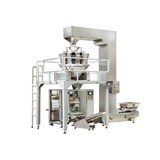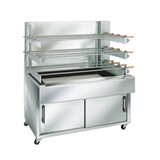This makes it easy to blow the budget but, at the same time, focusing on the right aspects of kitchen management can provide a real boost to the bottom line.
There are three basic areas of commercial kitchen management that every chef can work on to improve the economy and the efficiency of their operation.
Keep a close eye on kitchen staff workflow
Labour is the most expensive part of any commercial food business and while the old chef's adage that "if you have time to lean then you have time to clean" still holds true, managing the workflow of the kitchen so that staff are always fully occupied is the key to getting the most bang for your buck from kitchen staff.
The foundation of profitable staff management is to keep a practical working schedule that ensures dishwashers, kitchen hands or junior chefs are fully occupied on those slow days when the dining room isn't full to capacity. The essence of a practical work schedule is to only have the people in the kitchen that are necessary and the best way to do this is to understand the production capacity of the kitchen, and to streamline its manufacturing processes for maximum efficiency.
Streamline your incoming stock procedures

Another major expense in every commercial kitchen is the purchasing of produce, and just developing efficient goods inwards protocols can decrease the cost while maximising the potential profit.
Establishing streamlined ordering procedures that can be performed with a minimum of time and effort reduces the labour costs involved. This starts with keeping up-to-date, accurate ordering lists and using the least time-consuming methods like email, fax or websites for placing orders with suppliers.
It is also important to have a dedicated place for incoming deliveries to avoid double handling goods and for staff to have a set routine for accepting produce as it arrives. Many suppliers will also provide significant discounts on products when purchased in bulk and some companies will even store bulk lots of staples like oil or tinned tomatoes in their own warehouses if you purchase them in advance.
Measure profit margins on those menu favourites
Although chefs will always want the menu to reflect their own passion for cuisine it is essential to monitor the profitability of every item that is included on the card. This begins with carefully quantifying each recipe that the kitchen uses as accurately as possible.
While chefs do need to cook from their hearts, it is also important to accurately measure the cost of all the ingredients used in dishes – making exact recipes an essential management tool.
It is vital to constantly monitor the costs of produce to ensure that the price of every item on a menu maintains a sufficient profit margin. Using Point of Sale systems to track sales allows for the easy elimination of dead wood. The best review of your food is repeat business, so build menus with proven profit items.
Focusing on these fundamental areas of kitchen management will not only increase profitability, but will also improve the overall efficiency of the kitchen's operation and keep the ship running to a tight schedule.




-160x160-state_article-rel-cat.png)







-160x160-state_article-rel-cat.png)





